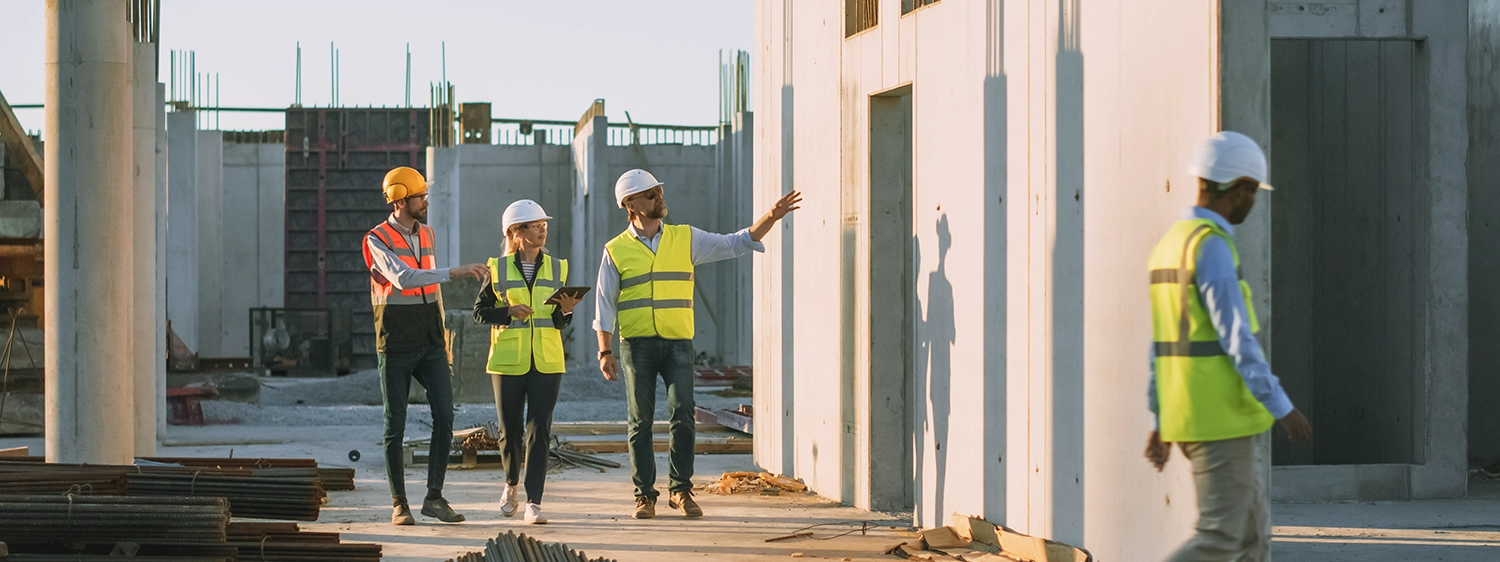Article
Tax planning for 2024: Top tips for your construction business
As the end of the year nears, project schedules tighten, extracurricular activities ramp up, and the holidays come into view.
With all that’s going on, it can be easy to overlook tax planning. But taking time to plan and prepare can help you save on your 2024 taxes and even reduce tax liabilities in the future.
Here are our top tax planning ideas for contractors.
1. Choose the correct entity structure.
When you establish your construction business, you can choose one of four entity tax structures: sole proprietorship, partnership, S Corporation, or C corporation. Each has its own tax advantages and disadvantages.
Setting up your company with the entity structure that’s most tax advantageous for you could be the single most effective tax-saving strategy over time.
2. Review your owner wages.
The wages you create for yourself as an owner will greatly impact how much you pay in self-employment tax. It’s important to review these each year, especially if your business is structured as an S corporation. Overlooking owner wages can negate any tax benefits of your entity structure as well as other tax deductions.
3. Elect the right accounting method.
The accounting method you choose—for both your overall accounting and your long-term contracts—will determine the timing at which you recognize income and expenses. Certain methods allow you to defer more income to later periods, which could result in tax savings.
4. Leverage Section 179 and bonus depreciation.
These two tax deductions allow businesses to accelerate deductions related to qualified assets (generally equipment, vehicles, and certain property improvements). Both should be a part of your big-picture tax plan. In the short term, however, it’s wise to take advantage of them.
For instance, if you’re planning to purchase equipment in the next six months, consider purchasing and placing it in service before year-end. You could also consider updating vehicles and, if applicable, using bonus depreciation to generate losses.
5. Take advantage of repair and maintenance regulations.
Tangible property regulations allow you to deduct certain repairs and smaller equipment, or improvement purchases immediately (i.e., expense them). These repairs and purchases must fall below a certain threshold, generally $2500.
What this means for your tax planning: If you wish to make improvements to your office space (or even purchase computer equipment) in the near future, it may provide a tax benefit to do so before year-end.
6. Maximize the 20% qualified business income deduction (QBID).
Under a provision that came into place with the Tax Cuts and Jobs Act of 2017 (TCJA), pass-through entities (sole proprietorships, s corporations, and partnerships) are able to take an extra 20% deduction on qualified business income.
Most contractors fall into what is called a “qualified activity,” so it’s likely you are eligible for this deduction.
7. Don’t miss out on tax credits.
Tax credits allow businesses to reduce their taxes dollar-for-dollar. Credits that are applicable to the construction industry include those related to energy efficiency, research and development, and rehabilitation properties. It’s important to know which are available to your business and understand how to qualify.
8. Elect the pass-through entity (PTE) payment.
Many states, including Minnesota, allow a business to deduct the state taxes paid on behalf of their shareholders. Known as the PTE payment, this benefit is available only to partnerships and S corporations; however, 50% of shareholders must make this election for the business to receive the benefit.
Given that Minnesota’s highest tax bracket is 9.85%, this election can be a significant tax saver for individuals.
9. Don’t forget about your retirement accounts.
Strategically making contributions to your retirement accounts can provide you with substantial tax savings. Consider looking at your retirement portfolio—and assessing the moves you could make—as part of your tax planning each year.
10. Get started with your year-end planning now.
Talking about tax planning is one thing; making it happen is another. If you haven’t started thinking about ways you could save on taxes in 2024, consider carving out time for a planning session as soon as possible. This is especially important given that many TCJA provisions are set to expire at the end of next year.
The good news is you don’t have to worry about tax planning on your own. Our construction-focused tax advisors are here to guide you through the process. If you have questions or would like to get started, contact us today.
September 10, 2024
Meet the Expert
Reach out to our team
Let's discuss
Interested in discussing this topic further? Fill out this form to get in touch with our advisors and get the conversation started. Together, we can help light the path forward to a brighter future.
"*" indicates required fields

